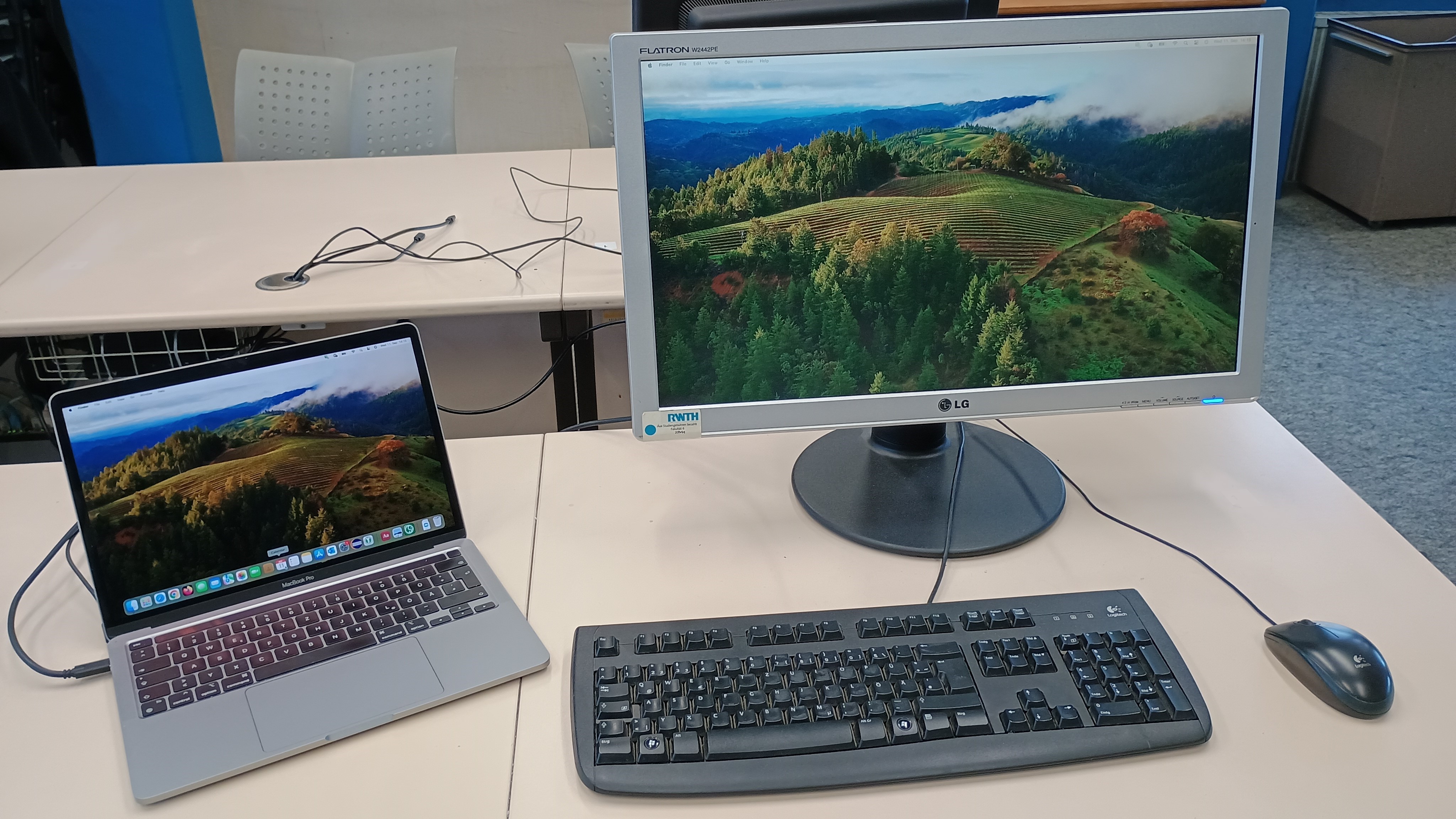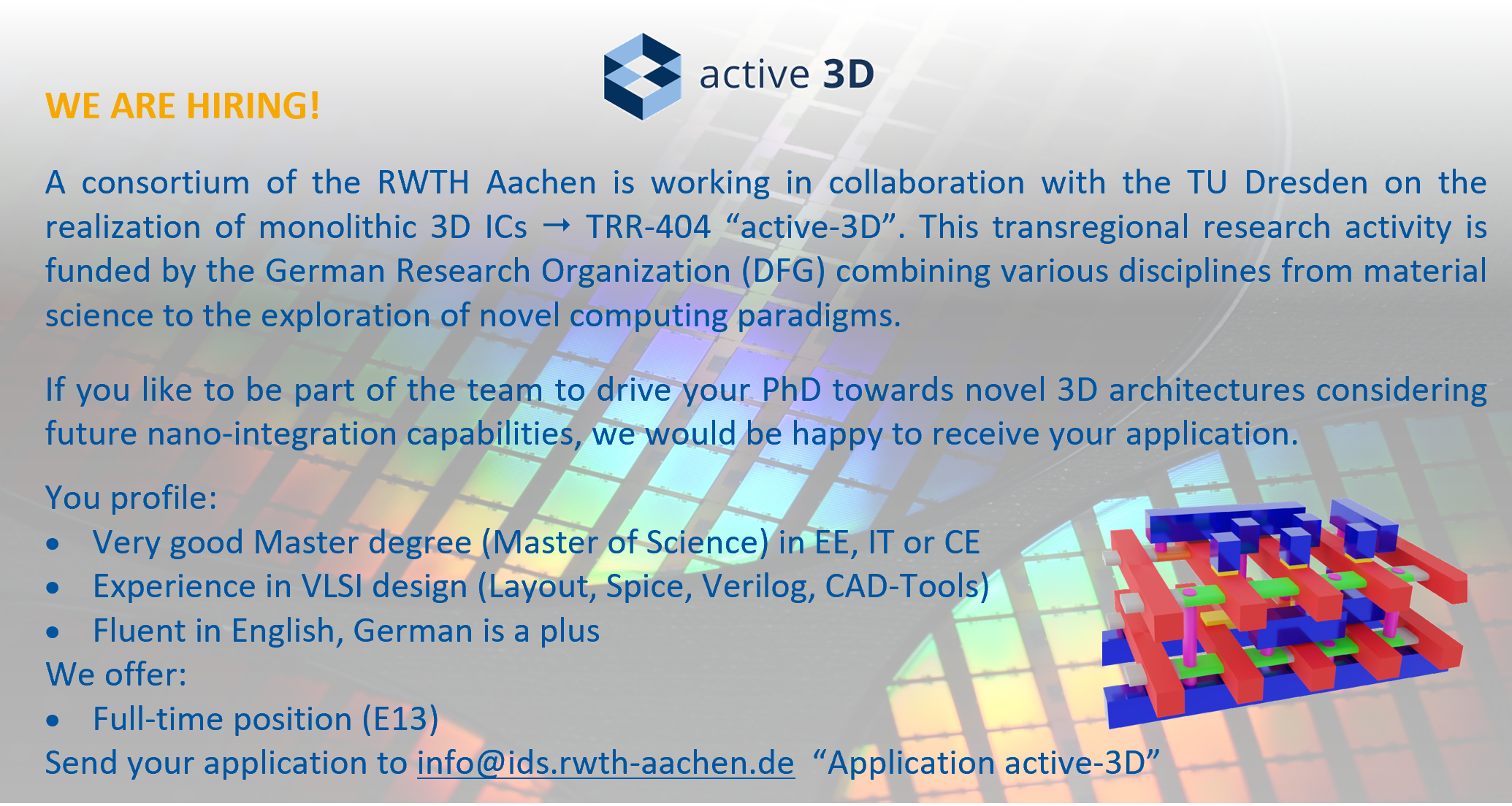
Das IT-Team des Lehrstuhls begleitet den Entwurfsablauf von der Algorithmenentwicklung in einer Hochsprache bis hin zur physikalischen Messung einer realisierten Schaltung. Hierzu ist es wesentlich, die Hard- und Softwareinfrastruktur kontinuierlich an die Anforderungen anzupassen. Zur Unterstützung dieses Bereichs suchen wir eine(n) neue(n) Mitarbeiter(in)
|
Für alle Studierende gibt es jetzt 10 Dockingstation-Arbeitsplätze im CIP-Pool, die euch das Arbeiten noch angenehmer machen! Egal, ob ihr mit Windows, Linux oder macOS arbeitet – alle gängigen Betriebssysteme werden unterstützt. Ihr könnt eure eigenen Laptops, Notebooks oder Notepads mitbringen und sie ganz einfach an die vorhandene Maus, Tastatur und den Bildschirm anschließen. Zusätzlich gibt es an jedem Platz auch einen Anschluss zum Aufladen eures Handys, damit ihr während des Lernens stets volle Akkus habt. Einfach andocken, aufladen und loslegen – perfekt für intensives Arbeiten, Gruppenprojekte oder entspanntes Lernen! |
 |



